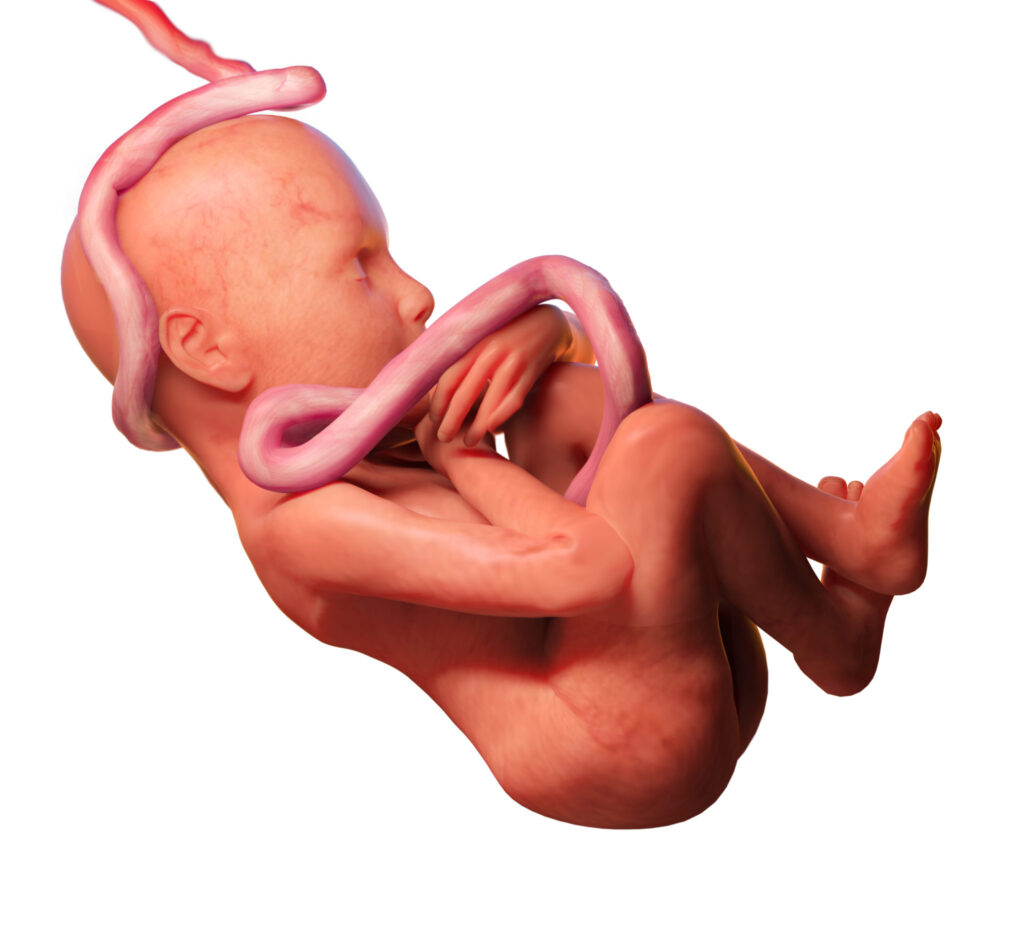Nuchal cord in pregnancy has to be a nightmare to would-be parents due to the risks it poses. Some people, out of ignorance overlook the condition, while others become paranoid. What is this condition, what causes it, and how can you manage it? Read on and get a clearer meaning to this otherwise mythical condition.
Table of Contents
ToggleWhat is a Nuchal Cord in Pregnancy?

A nuchal cord is a pregnancy condition characterized by the umbilical cord wrapping itself around a fetus’ neck.
A nuchal cord can occur throughout the pregnancy period or during delivery. A publication by PubMed revealed that 10-29% of all fetuses get some form of nuchal cord.
The umbilical cord can tie itself twice or three times around the fetus’s neck, reducing blood flow to vital organs. In the case of a double or triple nuchal cord, the fetus might be at risk of developing anemia or acidosis.
In more than 50% of cases, the umbilical cord unwraps itself as the fetus moves around in the uterus.
What Causes Nuchal Cord in Pregnancy?
The nuchal cord primarily occurs due to a baby’s movements. As the baby explores the limited space in utero, it sometimes gets entangled in the umbilical cord.
Sometimes, the cords might wrap around the fetus’s neck. Any time the fetus moves, the umbilical cord gets squeezed and compressed, increasing its grip on the neck.
Another reason why the nuchal cord occurs is due to a long umbilical cord.
The standard length of the umbilical cord is 50- 60cm (20-24 inches) long. However, long umbilical cords can be as long as 81cm (32 inches).
Longer umbilical cords increase the risk of wrapping themselves around a fetus’s neck, hence, a nuchal cord. In rare cases, the longer cords might also form a true knot.
How Can I Know that My Unborn Baby Has a Nuchal Cord?
There are several ways you can use to know whether your unborn baby has a nuchal cord: These include:
1. Using ultrasound
An ultrasound detects a nuchal cord with a high level of precision. The ultrasound might not correctly determine whether the nuchal cord is strong or loose during the early stages of pregnancy. However, this helps the mother take all possible preventive measures.
2. Fewer movements
A fetus with a nuchal cord moves fewer times, especially at the end of the last trimester. Although fewer movements do not necessarily mean the baby has a nuchal cord, you should not ignore that. Contact your obstetrician if the baby’s movements are less than five times every 30 minutes.
3. Reduced fetal heartbeat
The mother might note that the unborn baby’s heartbeat is reducing significantly during delivery. If the mother notices the baby’s heartbeat reducing during labor, they should talk to their midwife.
Complications From Nuchal Cord
The severity of nuchal cord complications depends on how tight or loose the umbilical cord is tied to the fetus’s neck. The Stillbirth Collaborative Research Network published a report revealing that nuchal cords caused 10% of all stillbirths.
Other risks that come with nuchal cord include:
a. Umbilical Cord Prolapse
Umbilical cord prolapse is a rare medical situation where the umbilical cord comes before the fetus during delivery. The condition causes a restriction in blood flow, which could put the unborn baby’s life at risk.
b. Numerous Physical Irregularities
The nuchal cord can leave visible marks on a baby, depending on the level of entanglement. These marks include but are not limited to purple/red marks on the neck and facial duskiness.
c. Slow fetal heart rate
If the entanglement on the fetus’s neck is so strong, it might strain the baby to breathe, leading to a faint heat rate.
How to Manage Nuchal Cord
Once the umbilical cord has entangled the baby on its neck, there is so little a mother or professional can do to remove it. However, these tips can help in the management of a nuchal cord:
- Unwrapping the umbilical cord from the neck when the head comes out during delivery.
- Cutting the umbilical cord immediately, the head pops out if it is tight around the neck.
- Infusion of the uterine cavity with the amniotic fluid to form buoyancy and loosen the cord. However, this tip applies when the due date is near.
- Rolling the mother to the side during labor. This would increase oxygen supply and reduce compression of the umbilical cord.
Bottom Line
The nuchal cord is manageable only if the mother and obstetrician work closely together. May you enjoy the pregnancy, and any nuchal cord be loose to give you a safe delivery.


